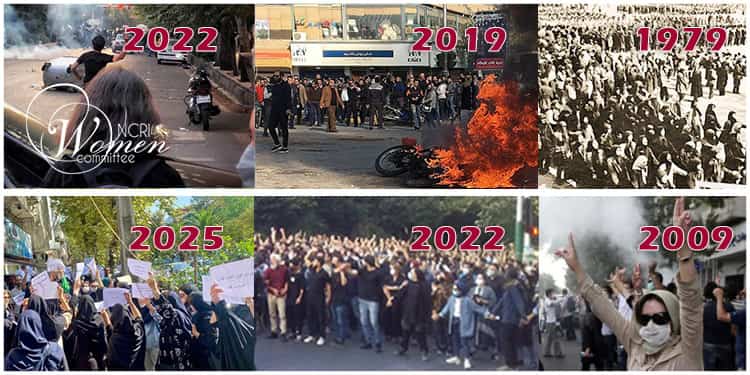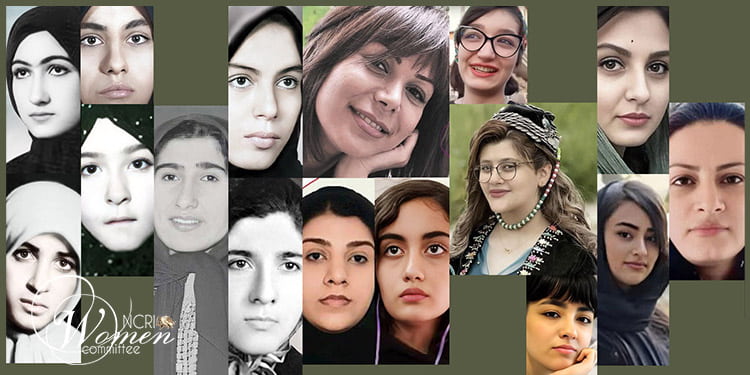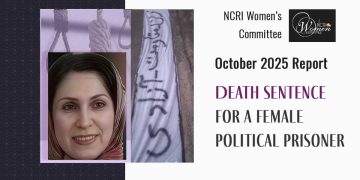The 2022 Uprising: Echo of Generations Who Refused to Yield
Three years ago, streets from Tehran to Ahwaz, and from Tabriz to Zahedan, pulsed with a defiant cry: “Down with Khamenei.”
The chant “Death to the oppressor—be it Shah or the (Mullahs’) Leader” resonated from coast to coast, signaling that Iranians would not accept a return to tyranny and demanded a society built on freedom and equality.
The six-month 2022 uprising, sparked by the murder of a young, innocent woman, Mahsa Amini, at the hands of the Guidance Patrol, was driven by young women and girls—whose courage continues to resonate across every street and neighborhood in Iran under the rallying cry: “Woman – Resistance – Freedom.”
Far from a fleeting storm, the 2022 uprising was a defining moment in Iran’s modern history; it was the clearest signal yet that Iran’s women—and the society they inspire—will not return to silence.
Security forces opened fire, more than 30,000 people were detained, and nearly 750 were killed. The clerical regime executed several young protesters, one even publicly. Yet the cry for freedom never died.
A Legacy of Defiance
The revolt did not appear overnight.
It sprang from four decades of organized struggle against a misogynist theocracy.
From the earliest days of the clerical regime, women transformed pain into defiance—and defiance into a national ideal.
The roots run deep.
In the 1980s, the Khomeini regime tightened his grip with mass arrests, torture, and executions.
Thousands of young women—students, workers, doctors, nurses, underground activists—faced prison walls and firing squads rather than betray their cause.
Their courage came at a staggering cost, but it forged a lasting legacy: a testament to bravery, organization, and the belief that real change comes through unshakable resolve and by paying the price.
The extraordinary struggle of these women (mostly members of the main opposition PMOI/MEK), and the sacrifices they made to confront a misogynist clerical dictatorship, placed them at the spearhead of organized resistance—recognized as rightful leaders of the movement and the living embodiment of Iran’s relentless fight for freedom.
That legacy resurfaced in the 2009 uprising and again in the bloody protests of November 2019, which shook the regime to its foundations.
Even regime media could not ignore the truth: Shargh admitted the “striking presence of women in driving unrest,” while the state-run Fars agency conceded their “pivotal, leading role.”
These moments were not isolated; they were rehearsal and proof that organized defiance could outlast repression.

From Street Protest to Organized Resistance
By 2022, the lessons of four decades ignited a nationwide blaze.
Women led marches from universities to city squares, staring down armed security forces.
Images of unarmed women confronting rifles flashed across the globe, giving the world a new picture of Iran: a nation whose daughters will not kneel.
But courage alone is not enough.
Across Iran, a network of clandestine Resistance Units—small, agile, and impossible to stamp out—now operates in factories, neighborhoods, and campuses.
These cells pierce the regime’s wall of fear with coordinated acts of defiance, showing that no city or village is beyond the reach of organized opposition.
Women are central to this movement, working shoulder to shoulder with their brothers in every province, carrying a single message: Woman – Resistance – Freedom.
These cells are the regime’s nightmare and the people’s hope under the harshest repression.
The Choice Before the World
Three years on, the question is not whether Iranian people and their women will continue to resist—they never stopped.
The question is whether the international community will rise to match their courage.
Verbal condemnation of executions and mass arrests is not enough.
Governments that champion human rights must impose targeted sanctions on officials responsible for killings and torture, support independent communications tools that keep activists connected, send independent delegations to Iran to visit Iranian prisons, and keep Iran’s political prisoners in the global spotlight.
The 2022 uprising was a reckoning and a promise.
It showed the ruling clerics that their days are numbered.
It showed the world that Iran’s women—and the nation as a whole—are not waiting for permission to claim their future.
The remaining question is how long it will take the world to recognize both the legitimacy of their struggle and the right of the Resistance Units to confront the terrorist IRGC.
Beneath Iran’s cities, a new uprising is quietly gathering for the regime’s final fall—driven by the iron will of its women and youth and the stealth and strength of the Resistance Units.
It counts on no one but the Iranian people themselves and their organized resistance.
























